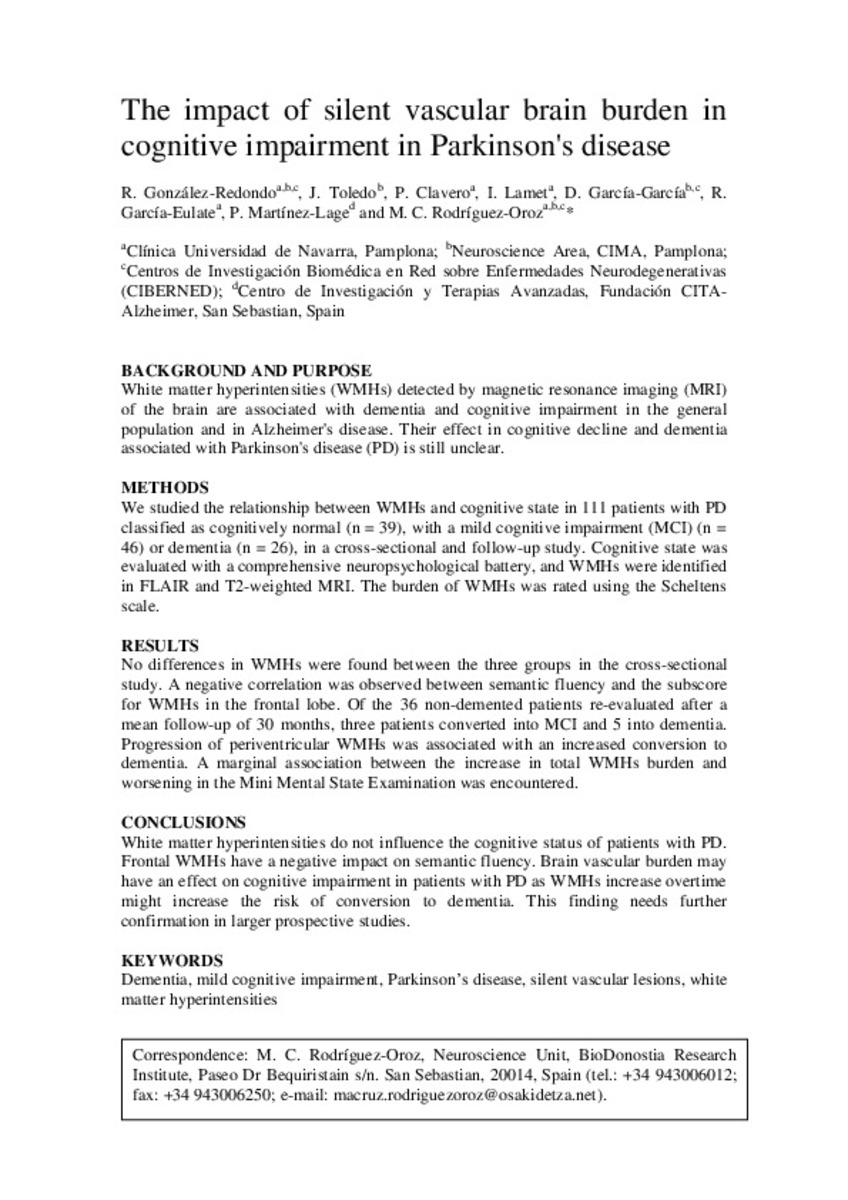The impact of silent vascular brain burden in cognitive impairment in Parkinson's disease
Palabras clave :
Magnetic Resonance Imaging
Alzheimer's disease
Fecha de publicación :
2012
Editorial :
Wiley-Blackwell
Cita:
Gonzalez-Redondo R, Toledo J, Clavero P, Lamet I, Garcia-Garcia D, Garcia-Eulate R, et al. The impact of silent vascular brain burden in cognitive impairment in Parkinson's disease. Eur J Neurol 2012 Aug;19(8):1100-1107.
Aparece en las colecciones:
Estadísticas e impacto
0 citas en

0 citas en

Los ítems de Dadun están protegidos por copyright, con todos los derechos reservados, a menos que se indique lo contrario.







